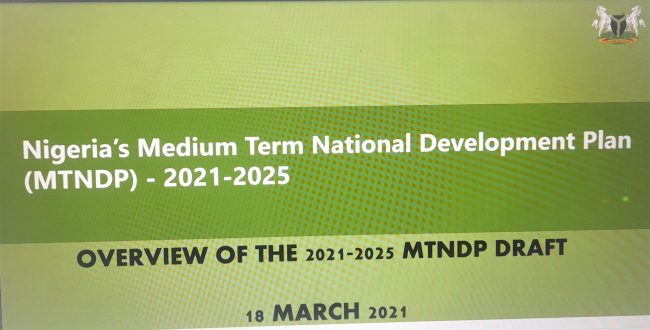The Nigerian government is working on a new five-year national development plan that has identified nine priority areas that need interventions.
The Medium-Term National Development Plan (MTNDP) 2021-2025 will be unveiled in October 2021, the Minister of State for Finance, Budget and National Planning, Clem Agba, said.
Agba at a capacity building workshop for Special Advisors and Technical Assistants of the ministers of Nigeria organized by the Konrad-Adenauer Stiftung (KAS) in Abuja, explained that the plan is currently being reviewed by different stakeholders.
READ ALSO: COVID-19 Affected 770,000 Jobs In Nigeria’s Tourism Industry
According to him, the MTNDP will replace the Economic Recovery and Growth Plan (2017-2020) that ended in December 2020.
Here are other things you need to know about the MTNDP:
- The government is planning to increase employment generation by about 25 million – 10 million from direct growth impact and 15 million from skill-acquisition and other interventions.
- Projected real GDP growth between 2021 and 2025 would be sufficient to ensure that about 10 million people do not fall into poverty.
- An additional number of people 25 million will be taken out of poverty, reducing poverty rate by 31 percent by 2025 compared to 40 percent in 2020.
- The government is estimating a broad-based economic growth of about 3.8 percent on average driven by non-oil GDP growth of 4 percent and oil GDP growth of 2.1 percent.
- Sustain the economic recovery and put the economy on a path of increasing per capita income to avert the past trend of higher population compared to the real GDP growth
- Ensure macroeconomic stability, anchored on coordinated fiscal and monetary policies, to achieve a declining path of inflation, a foreign exchange regime that allows for managed flexibility and consistency with macro-structural fundamentals.
- Continue to contain the economic and health impact of the pandemic through fiscal and monetary policies in a transparent and efficient manner.
- Ensure a more competitive non-oil sector; and a more robust and resilient economy that is less dependent on the oil sector.
Agba said a review of the plan would be done by the National Steering committee, the National Economic Council, and the Federal Executive Council before it would be launched.












